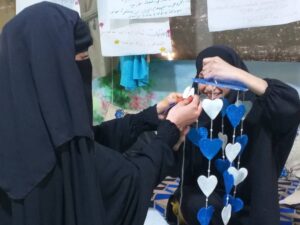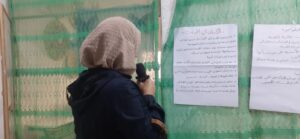Summary
The Autonomous Administration must form a specialized committee to review the curricula, relying on experts nominated by those involved in the intra-Kurdish dialogue, as well as those who are in dialogue with the Autonomous Administration. This committee would be given the authority to make practical recommendations regarding the curricula, the way it is taught, and the difficulties involved in each of those decisions, to be considered later on. This would utilize the readiness of all sides involved to cooperate and give time to the committee to complete its study.
Recommendations
1. Adjust the curricula to be more in line with the Government of Syria’s educational system.
The Autonomous Administration can adjust its current curricula to be in line with the Syrian education ministry by replacing ideological subjects, such as history and national and religious education, which would ease the integration down the road with Syrian educational subjects and allow graduates to enter Syrian universities. This would prevent political conditions from affecting the future of the students as long as they are receiving the same scientific information as other Syrian students.
2. Open testing centers so that students can take exams for preparatory and secondary degrees.
The AA should open can centers in the region for students to take exams for preparatory and secondary degrees in line with the Syrian education ministry. This way, students can have the choice to take their exams in these centers or in the institutions of the Autonomous Administration, or in some cases in both.
If this step were taken along with the previous recommendation, students’ educational attainment will allow them to obtain preparatory and secondary degrees recognized by the Syrian education ministry.
3. Partial translation of the curricula to local languages.
By translating some of the curricula, about a third of the total content, language barriers will be removed for Kurdish and Arab students alike. This will signal that the administration respects local languages and the rights of students to learn their mother tongues to an appropriate level. At the same time, it allows students to acquire a good level of languages throughout their studies.
4. Encourage societal dialogue regarding education
Open workshops, meetings, and conferences to discuss the issue of education and the future of the educational process, curricula, and academic degrees are recommended. This dialogue should not be limited to a particular political side, but rather be open to specialists in the field of education, administrators, teachers, and advanced students. Outside expertise can also be brought in, particularly from countries that have experienced similar crises.
By opening societal dialogue on education, it will be removed from the political context. Education could then be conceived of as a technical, social issue as well as a state service, concerning all groups in the region.
5. Give permits to private schools and educational institutions.
Private schools can be licensed, and a supervising directorate can be created to oversee these schools to guarantee that they receive permission from the Autonomous Administration by meeting the conditions of instruction in the Kurdish language to Kurdish students in their first years of study, in addition to Arabic and English. It would also meet the conditions of instruction for the Syrian education ministry in later years, specifically secondary education, in order for students at these schools to be able to advance to preparatory and secondary degrees in a systematic and free manner in these areas.
Northeast Syria can accommodate about 100 to 200 private schools, which would give the choice to many residents to choose the type of education pertinent to them. Additionally, it could meet the needs of middle-class and upper-middle-class students of the area. The church schools are an example of this.
6. More cooperation with UNICEF.
Despite the difficulties associated with the conditions for working with institutions belonging to the United Nations, more cooperation and dialogue with UNICEF is essential. Cooperation with UNICEF will help discover ways to support the new curricula, monitor the education system, and train its workforce.
7. Expand the new curriculum to include refugees in the Kurdistan Region of Iraq.
If a recognized and implementable curriculum is created, the Autonomous Administration can transfer that experience to refugee camps in the Kurdistan Region of Iraq to teach as an option alongside the Kurdistan Region’s official curriculum. Currently, the Government of Syria’s curriculum is being taught. This would help ease the reintegration of these refugees when they return.


